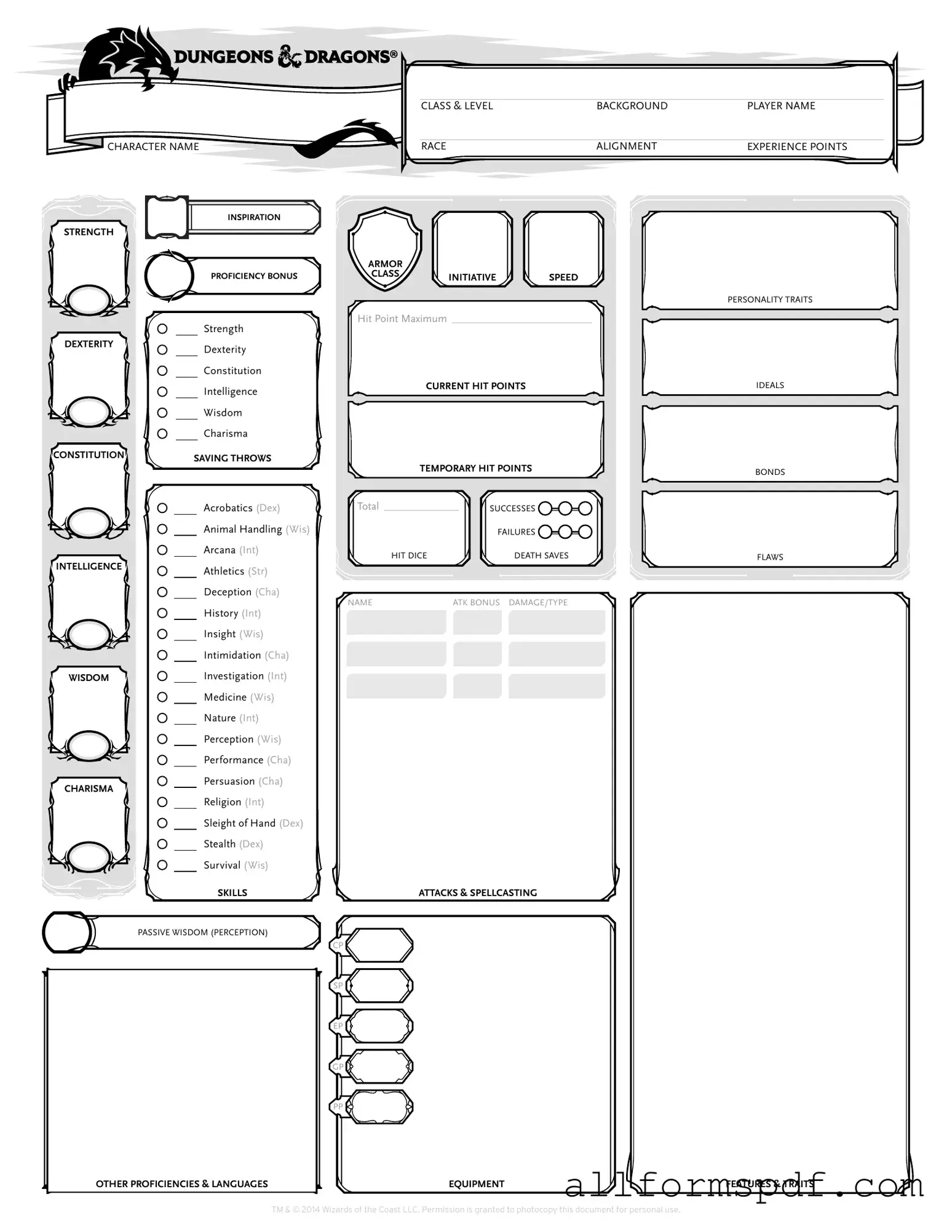Filling out a Dungeons & Dragons (D&D) character sheet can be an exciting yet daunting task for players. However, many individuals make common mistakes that can affect their gameplay experience. Understanding these errors can help players create more effective and enjoyable characters.
One frequent mistake is neglecting to fully understand the character's background and personality traits. Players often skip this section or provide vague descriptions. A well-defined background enriches the character's story and influences interactions within the game. This depth can enhance role-playing opportunities and create a more immersive experience.
Another common error is miscalculating ability scores. Players may overlook the modifiers associated with their chosen race and class. It is essential to carefully read the rules regarding how these scores interact. Incorrect ability scores can lead to misunderstandings during gameplay, affecting a character's effectiveness in various situations.
Additionally, players sometimes fail to adequately track their character's equipment and inventory. A cluttered or incomplete inventory can lead to confusion during gameplay. Keeping a detailed list of items, weapons, and armor is crucial. This attention to detail ensures that players can make informed decisions when using their resources.
Many players also forget to update their character sheets after leveling up. As characters gain experience, their abilities, spells, and skills change. Failing to reflect these changes can result in a character that is underpowered or misaligned with the player's intentions. Regularly reviewing and updating the character sheet is vital for maintaining accuracy.
Moreover, some individuals overlook the importance of spell slots and spell preparation. Players might not track their available spells correctly or forget to prepare spells according to their class rules. This oversight can hinder a character's effectiveness in combat or during critical moments in the story.
Another mistake involves not consulting the Dungeon Master (DM) about character choices. Players may choose races, classes, or backgrounds that do not fit within the campaign setting. Open communication with the DM can help ensure that character choices align with the story and world, enhancing the overall gaming experience.
Furthermore, players sometimes fail to consider their character's alignment. An inconsistent alignment can lead to role-playing challenges and conflicts within the party. Understanding how a character's moral compass influences their decisions is essential for cohesive group dynamics.
Lastly, some players neglect to include important details such as hit points and armor class. These statistics are crucial for gameplay and should be clearly noted on the character sheet. Without them, players may find themselves unprepared for combat encounters or unable to track their character's health effectively.
By being aware of these common mistakes, players can create more robust and enjoyable characters. Careful attention to detail and communication with fellow players and the DM can significantly enhance the D&D experience.
